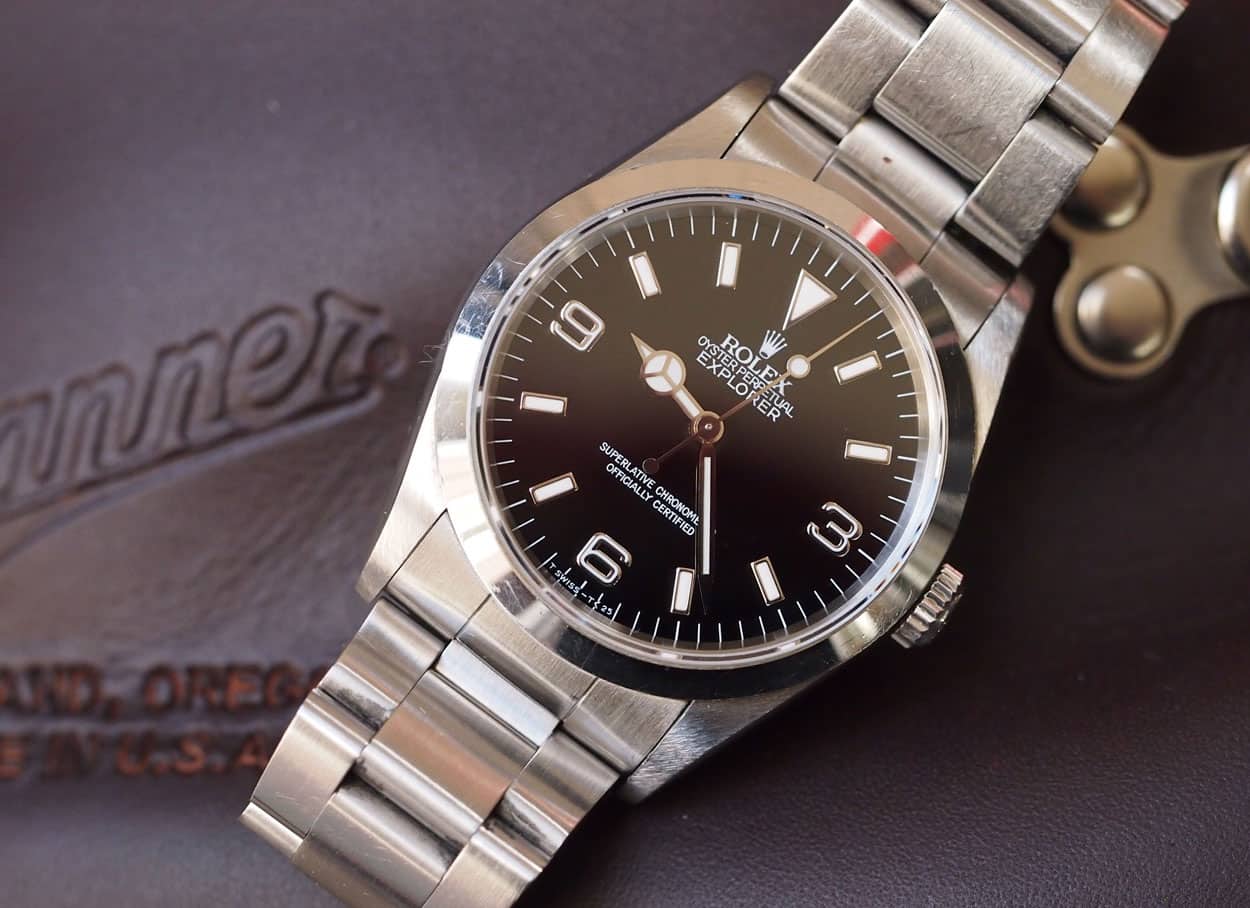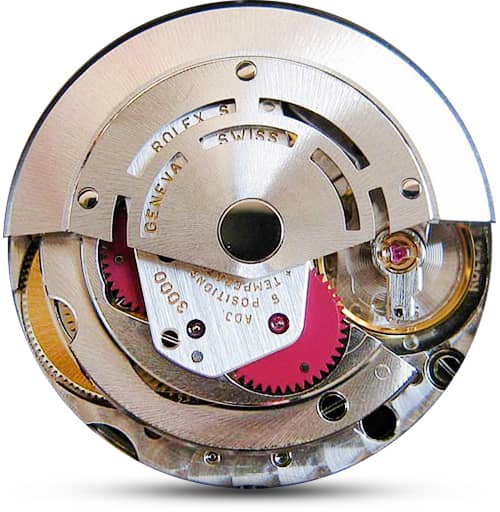Notes: The Rolex 14270 was the 1989 replacement for the 1016 Explorer model. It features a more formal look. It has a 36mm case and a sapphire crystal (the 1016 used an acrylic crystal). The watch was issued with a 3-link Oyster bracelet. It features a lacquered dial with applied indices.
Mechanism: The Rolex caliber 3000 automatic watch movement was introduced in 1990. It was used until around 2001. Found in Non-date models: 14000, 14010, 14060, 14270. The movement phased out the first of the brand’s entirely in-house manufactured range of movements, the 1500 series. It was an extended process, with the two groups running simultaneously for a number of years. It wasn’t until 1990, for example, that the Cal. 1570 was replaced in the Air-King ref. 14000 models with the new Cal. 3000. One of the simplest movements in the series, the Cal. 3000 became the last caliber Rolex created themselves to not feature a Breguet overcoil on the hairspring.
Family Notes: Rolex presented the first very Explorer in 1953 to commemorate Sir Edmund Hillary and Tenzing Norgay’s pioneering climb to the 8,848-meter summit of Mount Everest, the earth’s highest mountain. Over 60 years later, the Explorer still remains a very popular choice among Rolex’s collection of sports watches.
The Explorer was based on the already existing and sturdy Bubbleback series of watches, which has been modified by Rolex for its more audacious clients. In 1952, the references 6098 and 6150 (both using the A296 movement) were in fact the first prototype watches to be used by climbers; they were watches with white dials and leaf shaped hands, which didn’t bear the name Explorer yet. In 1953, these models became the references 6298 and 6350, when they were fitted with the typical Explorer-type 3-6-9 dial and later with the Mercedes hands. Before Hillary and Norgay climbed the Everest, Rolex didn’t name their watches Explorer. Although Rolex registered the Explorer trademark on January of 1953, the Explorer gained its name after Hillary and Norgay climbed up the Everest and “Explorer” began to be added on the Ref. 6350, at the end of 1953.
The Explorer was based on the already existing and sturdy Bubbleback series of watches, which has been modified by Rolex for its more audacious clients. In 1952, the references 6098 and 6150 (both using the A296 movement) were in fact the first prototype watches to be used by climbers; they were watches with white dials and leaf shaped hands, which didn’t bear the name Explorer yet. In 1953, these models became the references 6298 and 6350, when they were fitted with the typical Explorer-type 3-6-9 dial and later with the Mercedes hands. Before Hillary and Norgay climbed the Everest, Rolex didn’t name their watches Explorer. Although Rolex registered the Explorer trademark on January of 1953, the Explorer gained its name after Hillary and Norgay climbed up the Everest and “Explorer” began to be added on the Ref. 6350, at the end of 1953.
Item created by: gdm on 2018-12-18 08:43:56
If you see errors or missing data in this entry, please feel free to log in and edit it. Anyone with a Gmail account can log in instantly.
If you see errors or missing data in this entry, please feel free to log in and edit it. Anyone with a Gmail account can log in instantly.



